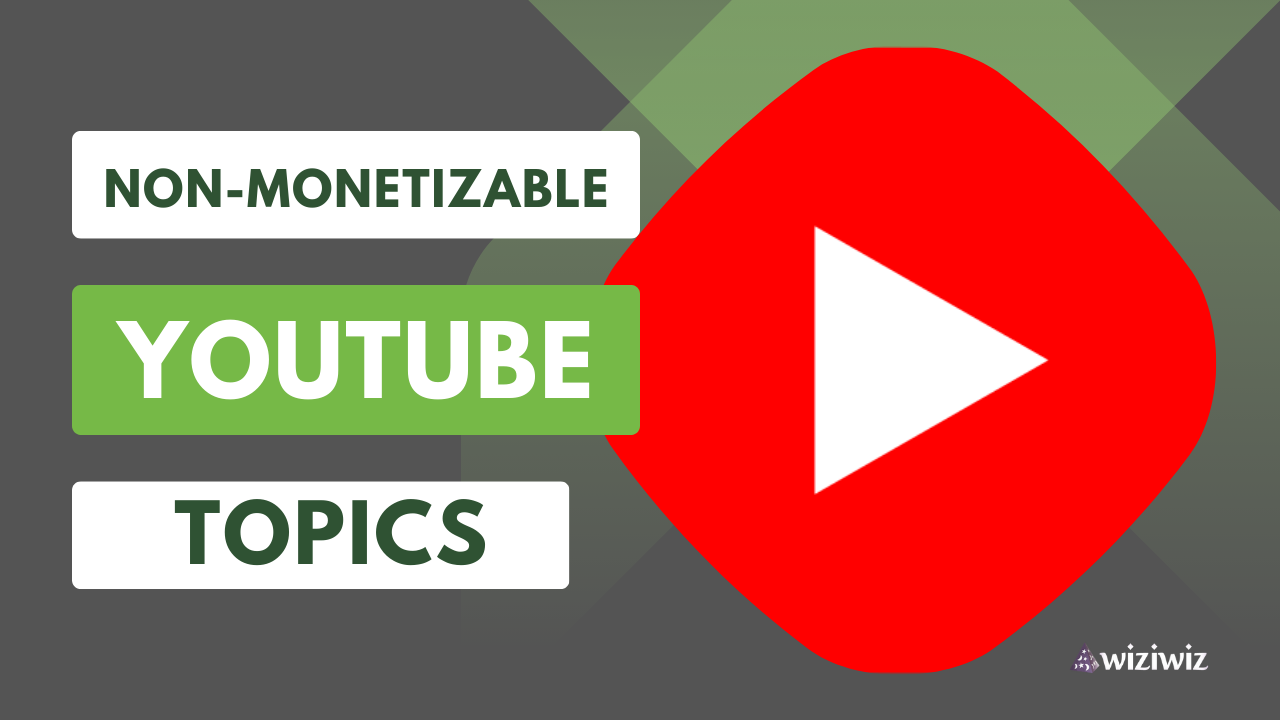As a YouTube content creator, understanding the platform’s monetization policies is crucial for ensuring that your videos align with the guidelines and increase the likelihood of earning revenue. While a wide range of topics are eligible for monetization, there are also certain categories that are prohibited or restricted due to their potential to harm viewers or violate copyright laws.
Sensitive or Harmful Content
YouTube strictly prohibits monetization of videos that promote violence, hate speech, or dangerous activities. These types of content can be highly offensive, incite conflict, promote prejudice, or pose a threat to the safety of others. For instance, videos that promote bullying, harassment, or discrimination would be considered harmful and ineligible for monetization. Additionally, videos that glorify or endorse illegal activities, such as drug use or violence, would not be allowed.
Copyrighted Content
To protect the intellectual property rights of creators and ensure fair compensation, YouTube does not allow monetization for videos incorporating copyrighted material without proper licensing or authorization. This includes music, video clips, images, and other copyrighted elements. Content creators must obtain the necessary licenses or permissions before incorporating copyrighted material into their videos to avoid copyright infringement and maintain monetization eligibility.
Repetitive or Low-Quality Content
YouTube upholds high standards for content quality and seeks to present its users with engaging and informative videos that provide value. Videos that lack originality, are repetitive, or appear to be low-effort may not meet these standards and could be deemed ineligible for monetization. This means that content creators should strive to produce unique, well-researched, and visually appealing videos that offer value to their viewers.
Content Inappropriate for All Audiences
YouTube caters to a diverse audience, including minors, and strives to maintain a family-friendly environment. As such, monetization is not permitted for videos containing mature content, sexually suggestive material, or otherwise inappropriate content for minors. This includes videos with excessive profanity, nudity, or explicit sexual material.
Additional Restricted Topics
In addition to the broader categories mentioned above, YouTube also strictly prohibits monetization for specific topics that pose potential risks or violate the platform’s guidelines:
- Drugs and Alcohol: YouTube recognizes the negative impact of promoting or glorifying drug or alcohol use and bans monetization for such videos.
- Gambling: Monetization is not allowed for videos that promote or facilitate gambling activities, as this aligns with YouTube’s commitment to responsible content and the protection of users.
- Remedies and Cures: Unsubstantiated medical claims or false remedies are not eligible for monetization. YouTube prioritizes accurate and reliable health information.
- Financial Advice: Unauthorized financial advice provided without a license is prohibited for monetization. This protects viewers from potentially misleading or harmful financial guidance.
- Regulated Goods and Services: Monetization may be restricted for videos promoting or selling regulated goods or services, such as tobacco or firearms, which require specific licensing or adherence to regulatory guidelines.
Enhancing Monetization Chances
To increase the likelihood of having YouTube content eligible for monetization, content creators can focus on:
- High-Quality Content: Striving to create original, engaging, and informative content that provides value to viewers.
- Targeted Audience: Identifying a specific audience and tailoring their content to their interests and preferences.
- Effective Promotion: Actively promoting their videos on social media, relevant online platforms, and through collaboration with other creators.
- Guideline Compliance: Strictly adhering to YouTube’s monetization guidelines to ensure compliance with content quality and appropriateness standards.
By producing high-quality, engaging content that aligns with YouTube’s monetization guidelines, content creators can significantly enhance their chances of having their videos monetized and generating revenue from their creative endeavors.
In addition to these topics, there are also some types of content that are not eligible for monetization, such as:
- Content that is only available in certain countries
- Content that is less than 3 minutes long
- Content that is uploaded by channels with fewer than 10,000 subscribers
- Content that is uploaded by channels that have been inactive for more than 6 months

Leave a Reply